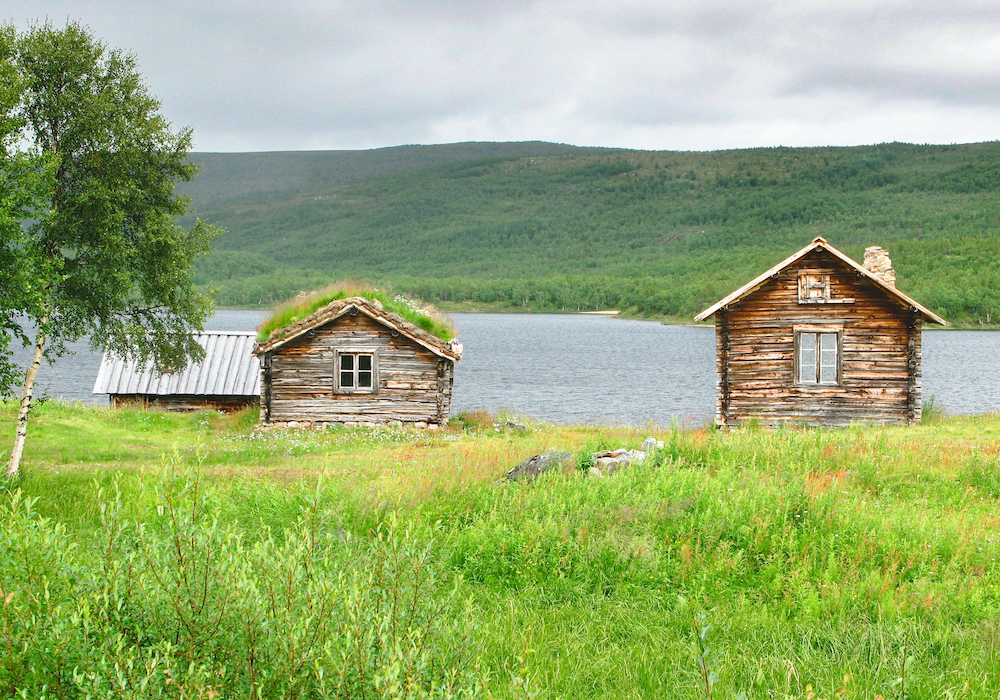Finland is an enlightened modern Nordic welfare state, wired, highly literate and technologically advanced. Finland is also the most sparsely inhabited country in the European Union, mostly covered in forest, lake, and tundra, where urban life is a relative novelty and the average family spends weeks every summer in a small cabin by a lake or seashore, with no running water and often no electricity. Finland was part of the Swedish Empire for centuries. Its culture is firmly Nordic, its life dotted with Scandinavian standbys like coffee with cardamom buns and red wooden houses. But Finland’s shared border with Russia and ties to the Baltic states have effects that permeate its culture and politics. Like its sister language Estonian, Finnish is a Uralic language, neither Scandinavian nor Slavic—nor indeed Indo-European—and the oral folklore that preceded all Finnish literature, though it shares threads with all its neighbors, is utterly unlike any other and filled with magic. The heroes of Finland’s epic Kalevala are not Vikings but shamans.
A corresponding mix of ingrained social awareness, optimistic future-thinking, a fervent love for nature, and a large dose of magic is reflected in Finnish literature and in this small sampling from Finland’s contemporary literary scene. The recent Finnish writing in this issue encompasses a wide range of styles and themes, from works in the Nordic realist tradition to personal and confessional stories to Finland’s own varied and ineffable version of Weird fiction. Much of it is also funny, a characteristic of Finnish writing from the beginnings of its literature in the nineteenth century, whose authors, as well as their contemporary counterparts, seem to have a peculiar ability to make you laugh and break your heart simultaneously.
Among those presented here are long-established authors with decades of published works such as Daniel Katz, whose beautifully written, well-loved novels and short stories have appeared regularly since the late 1960s. “The Weight of Words” is a wonderful example of his melancholy humor and historical perspective, and is, bafflingly, his first appearance in English outside of Finland, though his work has been published abroad in many other languages. Leena Krohn has been writing since the 1970s and, in addition to being a master of insightful portraits of ordinary life, is also known for her Weirdness, both of which elements can be seen in her story of a writer’s life, “Final Appearance.” Antti Tuuri, an author of highly realistic and comprehensively realized fiction since the 70s, is represented here by an excerpt from his novel Eternal Road, chronicling the lives of Finnish immigrants to Soviet Karelia in the idealistic early days of communism.
The 1990s and 2000s were a rich period of germination in Finland’s literature, and many of the writers in this issue emerged at that time, including the poetic and plainspoken Petri Tamminen, whose book One of Those Difficult Feelings We Have, from his bestselling series of memoirs, is excerpted here. Kari Hotakainen is acclaimed for his empathetic, bitingly funny social commentary, as seen in this group of short-short stories from his collection Finnhits. Sofi Oksanen is a widely-translated author best known for her historical fiction, represented by this excerpt from her most recent novel, When the Doves Disappeared, the third in her planned Estonia-Finland quartet. Poet, humorist, and champion of the under-underdog, Mikko Rimminen is famous for his playful use of a complex vernacular language, here represented by a tale of the indignities of modern child-rearing titled “Easy as Flushing.” Maritta Lintunen is a poet and author of lyrical fiction about ordinary people’s extraordinary experiences, as in her mix of mind and magic, “The Message Bearer.” Genre-bending author Pasi Ilmari Jääskeläinen writes fiction that mixes equal measures of profundity, geniality, and creepiness, with his story “Letter to Lethe.”
It’s a pleasure to also present translations of works by emerging writers, all of them, as far as I know, their authors’ first appearance in English. “The Right Place” is a brisk and believable story from Joonas Konstig’s highly praised debut collection, published in 2008. The haunted story of a medicalized life, “The White Room” is from Tiina Laitila Kälvemark’s acclaimed 2012 debut collection. Peter Sandström’s “Son,” a tender but uncompromising portrait of a father, which was written in Swedish, Finland’s second official language, was also first published in 2012, and “Daughters,” Shimo Suntila’s zany story of put-upon parenthood, appeared in a 2013 issue of the Finnish science fiction magazine Portti.
Helping to compile a collection of contemporary Finnish literature in English is a privilege, and a somewhat heavy responsibility. While Finland’s influence in many fields is unusually large for a country of its size, the literature of Finland has historically been sparsely represented in English translation. For many readers, the pieces presented here will be the first literature they’ve ever read from a country they know little about, and for many Finnish authors this issue is a rare opportunity to reach an English-language audience. And Finland is a country brimming with avid readers and large quantities of really great books. To choose potential submissions for this issue from among the scads of books published over the past few years would be a daunting, nearly impossible task. Luckily, I was able to rely on my fellow translators, who recommended and translated a wide selection of pieces by an eclectic group of interesting authors, some of them previously unknown to me. This system had the virtue of maximizing our collective knowledge, and also of matching translators with the works they love, and love to translate. I hope you love them, too.
© Lola Rogers, 2014










